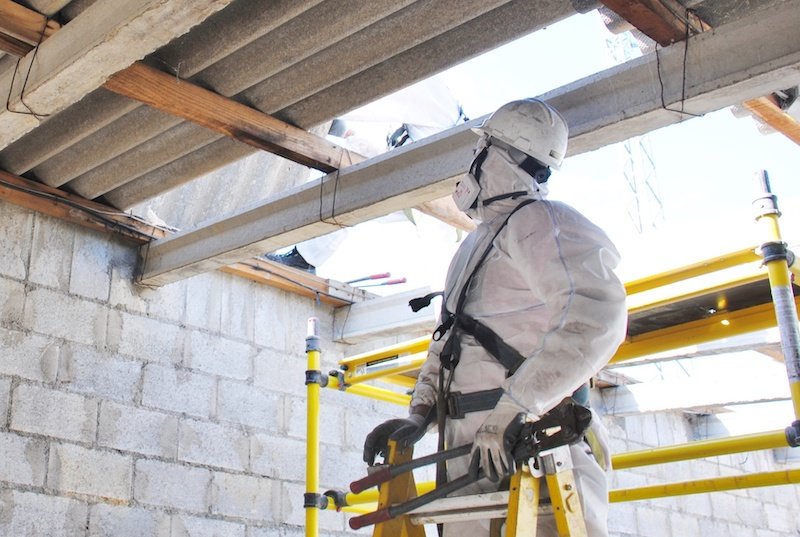Asbestos Consulting Services
GE furnishes clients with comprehensive asbestos services from inspection to abatement management. Certified specialists perform building inspections, conduct air monitoring, analyze samples, develop asbestos removal specifications and prepare Operations and Maintenance (O&M) plans.
GE’s personnel are trained under the requirements of the Asbestos Hazard and Emergency Response Act (AHERA), and full documentation of the required certifications are provided in each client’s report. Our specialists are often used as part of a team for performance of ESAs where an asbestos survey is required. Our asbestos personnel work throughout the Southeastern United States performing asbestos surveys and managing abatement projects.
GE’s full service approach towards asbestos management is described in the sections which follow. This approach enables GE to efficiently assist clients in addressing the problems and liabilities associated with asbestos identification, assessment, and removal.
Surveys for Asbestos Containing Material
When conducting a survey for asbestos containing materials (ACM), GE utilizes specialists trained in accordance with AHERA requirements. This training requires that systematic sampling protocols are followed, and that project personnel have an understanding of the nature and types of asbestos, as well as, potential exposure routes.
All on-site work efforts are pre-arranged with the client in order to facilitate access, occupant communication and sampling scope. Inspections are conducted for pre-renovation or pre-demolition activities. GE inspectors assess and sample all suspect building materials and collect samples for analysis at our NVLAP-accredited local laboratory. When necessary, appropriate respiratory protection is used by the asbestos inspectors to ensure full compliance with OSHA regulations. Upon receipt of laboratory results, the field notes are carefully evaluated and a final report is generated.
Upon completion, the final report is prepared and submitted to the client. The survey methodology, sample locations, analytical results, description of homogeneous areas with positive analytical results including quantity and location of ACM present, description of the material condition, and recommendations are provided in the final report.
Asbestos Management Plan
GE recognizes that wholesale removal (abatement) of asbestos containing materials may be either unwise or uneconomical. Therefore, Operations and Maintenance (O & M) plans are developed on a site specific basis to provide the building owner with the means to safely leave the ACM in place, while minimizing the potential for fiber release.
These O & M plans can be utilized to assist in meeting the OSHA requirements for building owners. When based on the survey, it eliminates the need to “assume” that many materials contain asbestos in buildings built before 1980. Communications specified in the plan will allow for the stringent requirements of OSHA rules to be met and the manuals can be used in future planning for the structure.
O & M plans are developed from the asbestos survey reports. The documentation of the location, quantity and physical condition of all ACM and recommended procedures for protection of staff and citizens. Recommended procedures for future actions that may disturb an asbestos containing material are included.
Abatement Plans and Specifications
Proper abatement plans and specifications are necessary to ensure that abatement work is performed in accordance with client needs, OSHA and EPA requirements. Penalties for non-compliance are severe, but they may easily be avoided by using a proper asbestos abatement plan. Proper plan design also allows the abatement to be accomplished more effectively and at a lower cost.

When preparing an abatement plan for a client’s facility, GE will consider the client’s needs and cost constraints. Those areas identified by the asbestos survey as containing asbestos will be evaluated to develop options for abatement (i.e. removal, enclosure, and encapsulation).
Drawings are then developed to clearly delineate work areas. A work schedule is developed with the client to insure continued operations of the facility (if possible), or to coordinate equipment shutdown and vacating the facility.
Next, specifications are developed to provide the abatement contractors with the necessary information for contract negotiation between the client and the contractor. Definitions are clearly spelled out, along with the responsibilities of the contractor, to prevent delays, cost overruns, and to comply with all applicable regulations.
Once combined, the drawings, work schedule and specifications comprise the abatement plan. The abatement plan is then utilized to solicit bids from qualified abatement contractors. GE’s consultants are available to answer questions, conduct pre-bid conferences and walk- throughs for potential contractors. Finally, as the bids are received, contractor qualifications are verified, including insurance coverage, bonding requirements, previous experience, evaluation of medical and safety programs, and documentation of employee certifications and training. This task may also be undertaken in cases where a selected group of contractors are pre-qualified prior to receiving a copy of the abatement plan for bid package preparation.
The net result of this process is a coordinated project which complies with asbestos abatement regulations and provides a competitive price to the client.
Abatement Supervision and Air Monitoring
An abatement contractor’s work should be monitored by an independent, licensed consulting firm, to ensure full compliance with the project plan and specifications. Like any construction project, the owner’s interests are best served by a professional, experienced in the unique problems associated with asbestos abatement. Air monitoring is critical to assure that fiber concentrations inside the work area are kept within regulatory standards. The monitoring of fiber levels outside the containment area is necessary to prevent liabilities associated with the exposure of unprotected persons.
GE’s on-site abatement supervisors carefully monitor the contractor’s efforts to ensure that appropriate removal techniques are employed, that all specified materials are completely abated, that all ACM materials are properly disposed of and appropriate waste manifests are prepared.
GE staff ensure that all schedules are maintained and that access to the client’s structures is made available to the selected contractor. After passing a visual inspection at the work area(s), final clearance PCM samples are collected. Once the air passes the clearance standard, the client can then reoccupy a structure or begin demolition proceedings.
